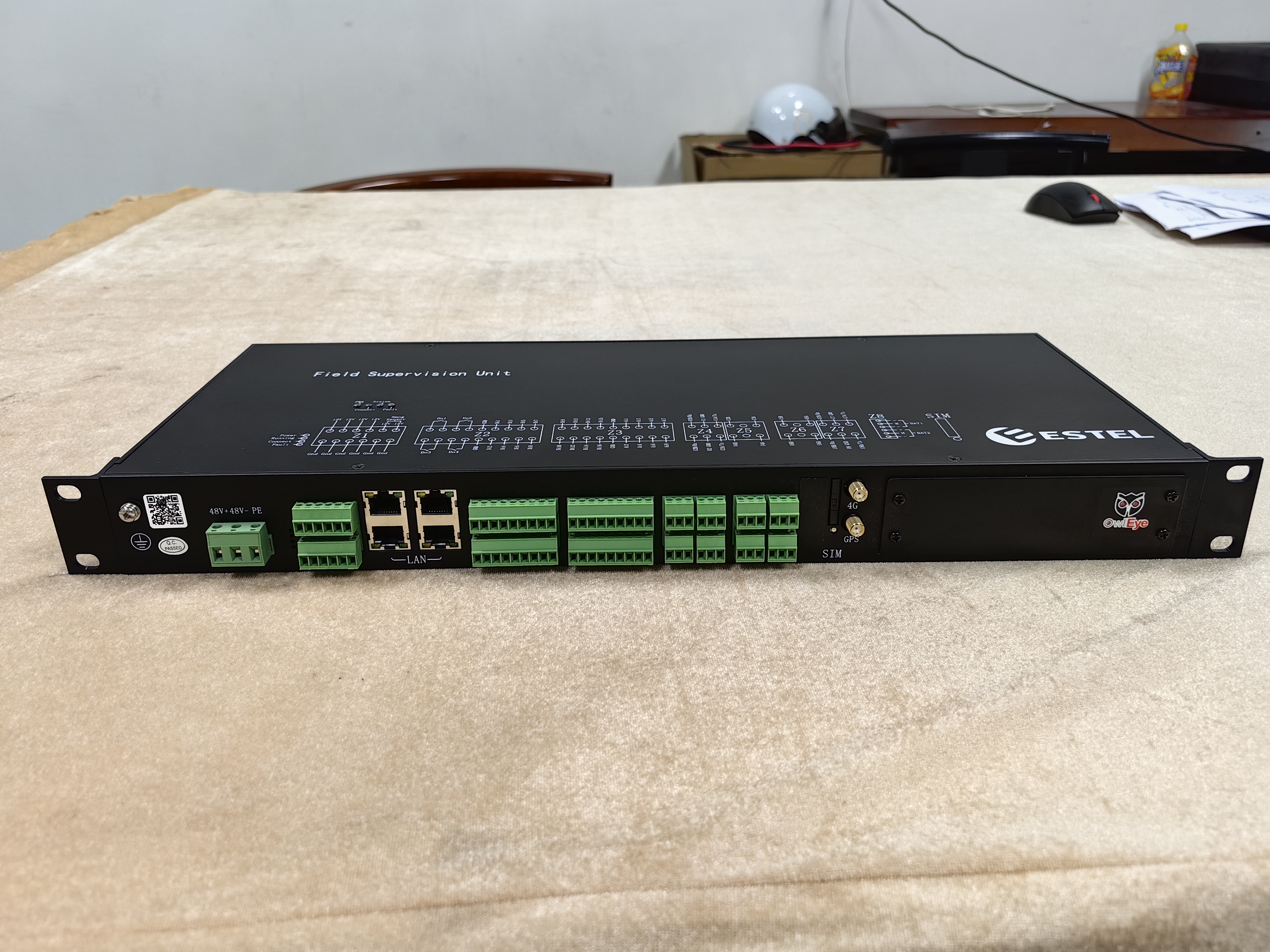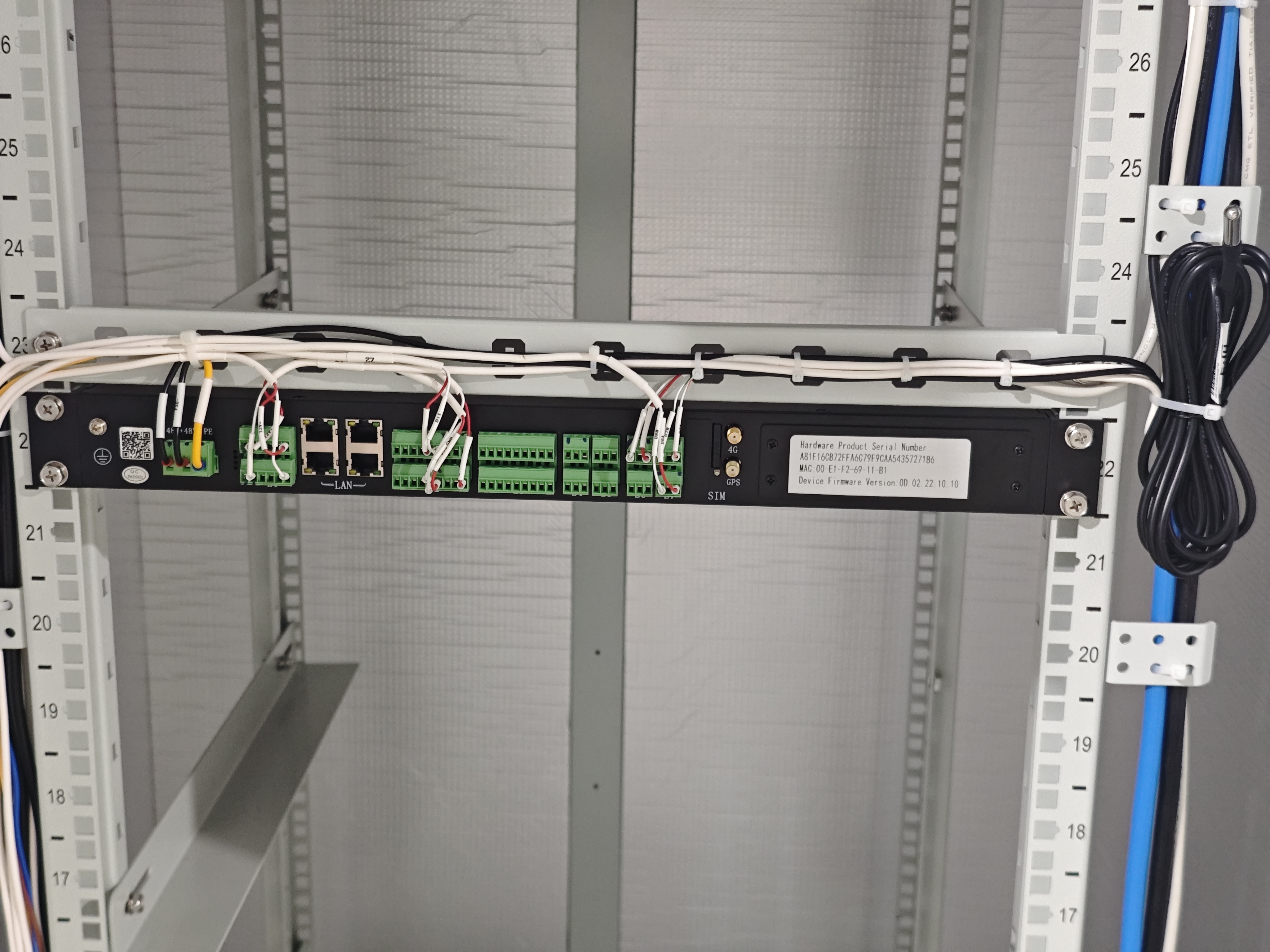Environment Monitoring System trends: intelligent, modular, and standardized supplier competition landscape in telecommunications

Intelligent, modular, and standardized Environment Monitoring System solutions now define the competitive landscape in telecommunications. The rapid adoption of 5G and 6G networks, combined with IoT and AI, has transformed how telecom operators manage vast volumes of real-time data. These advanced technologies enable predictive maintenance, real-time monitoring, and autonomous operations. With low latency and high throughput, modern networks demand scalable data management and robust security to ensure reliable performance in complex environments.
Key Takeaways
Intelligent Environment Monitoring Systems use AI and IoT to collect real-time data, predict failures, and improve network reliability.
Modular designs let telecom operators easily add or remove system parts, enabling quick upgrades and cost savings.
Standardization ensures devices from different suppliers work together smoothly, improving security and simplifying system expansion.
Suppliers compete by offering scalable, flexible, and interoperable solutions that support advanced analytics and sustainable operations.
Adopting intelligent, modular, and standardized systems helps telecom operators reduce downtime, lower costs, and prepare for future technology changes.
Environment Monitoring System Trends

Intelligence
Telecommunications operators now rely on intelligent systems to manage complex network environments. AI, IoT, and automation have transformed the Environment Monitoring System landscape. These technologies enable real-time data collection, predictive maintenance, and improved operational efficiency.
Advanced remote sensing platforms, such as satellites, drones, lidar, and hyperspectral imaging, deliver high-resolution environmental data.
AI and machine learning process large datasets, recognize patterns, detect anomalies, and support predictive modeling.
IoT sensors and connected devices collect granular, real-time data from telecom infrastructure.
Machine learning algorithms analyze both historical and real-time data to predict equipment failures, allowing proactive maintenance.
Cloud computing and edge computing provide scalable data processing and storage, reducing latency and enabling faster anomaly detection.
Digital twins simulate network conditions, supporting risk-free testing of maintenance strategies.
Operators benefit from these advancements through improved network reliability, reduced downtime, and optimized resource allocation. For example, intelligent power distribution units have led to a 15% reduction in energy consumption and a 20% improvement in equipment uptime. Real-time monitoring of temperature, humidity, and power usage supports energy efficiency and proactive risk mitigation.
Modularity
Modular design has become a cornerstone of modern Environment Monitoring System solutions in telecom. Each module operates independently, which ensures system stability when adding or removing components. This approach supports scalability and upgradability, allowing operators to expand or reconfigure their monitoring systems as network requirements evolve.
Modular structures, combined with wireless networking, enable easy system construction, reconstruction, and upgrades.
Operators can integrate new sensor modules or remove outdated ones without disrupting overall system performance.
Flexible expansion supports diverse telecom needs, from small cell sites to large data centers.
This modularity allows telecom companies to respond quickly to technological changes and regulatory demands. The ability to upgrade or scale systems without major overhauls reduces operational complexity and cost.
Standardization
Standardization plays a critical role in ensuring interoperability and integration of Environment Monitoring System solutions with telecom and smart city networks. Global standards, such as those from IEEE, ITU, and ISO, provide architectural frameworks and protocols that enable seamless communication between diverse technologies.
IEEE standards offer guidelines for IoT connectivity, data management, and cross-domain interaction.
ITU recommendations support smooth communication across telecommunication and ICT infrastructure.
ISO 37120 aligns smart city development with sustainability and quality of life indicators.
Certification under these standards provides global recognition and promotes sustainable resource management.
Standardization fosters interoperability, improves operational efficiency, and enables data-driven decision-making. It also ensures that legacy and new technologies can work together, supporting long-term adaptability and innovation in telecom and smart city ecosystems.
Intelligent Systems
AI and Automation
AI-driven automation has revolutionized how telecom operators manage their networks. These systems use machine learning and advanced analytics to optimize network performance, automate repetitive tasks, and enhance operational efficiency. Operators now benefit from:
Predictive maintenance that detects early hardware or software issues, reducing downtime. For example, some telecom companies use AI systems to alert engineers before outages occur.
Automated network management that optimizes traffic routing, load balancing, and capacity planning in real time.
Robotic process automation (RPA) that handles repetitive tasks, improving accuracy and reducing human error.
AI-powered fraud prevention and revenue assurance, which identify billing errors and potential fraud, enabling real-time alerts and recovery of lost revenue.
Compliance automation that provides real-time monitoring and risk detection without disrupting existing services.
AI also supports self-optimizing networks, allowing the Environment Monitoring System to adapt dynamically to changing conditions. Cloud-based AI deployments further reduce the IT burden and enable seamless integration with existing infrastructure.
IoT Sensors
IoT-based smart sensors play a critical role in real-time monitoring and analytics for telecom networks. These sensors collect granular data on temperature, humidity, vibration, and other environmental factors. By integrating with IoT platforms and connectivity protocols such as WiFi, Bluetooth, and LoRaWAN, these sensors ensure continuous data transmission to cloud and edge devices.
Operators use this real-time data to detect anomalies, forecast potential issues, and trigger intelligent responses. For instance, IoT sensors can monitor network parameters and activate cooling systems before equipment overheats. This approach improves network reliability and operational efficiency by enabling proactive interventions.
IoT sensors, combined with AI analytics, provide telecom operators with the tools to manage complex environments and prevent failures before they impact service.
Predictive Maintenance
Predictive maintenance leverages AI and IoT to analyze real-time and historical data from network equipment. This process identifies patterns that indicate potential failures, allowing operators to schedule maintenance proactively. The benefits include:
Early detection of equipment degradation, reducing downtime.
Optimized maintenance scheduling, which lowers operational and emergency repair costs.
Extended equipment lifespan, minimizing replacement expenses.
Improved network reliability, leading to higher customer satisfaction.
Compliance with safety regulations through proactive risk identification.
Method | Description |
|---|---|
Measures how closely system outputs match observed data for precise delivery | |
Point-by-point comparison | Assesses individual data points to improve accuracy |
Residual error calculation | Quantifies differences to refine system precision |
Error transformation | Applies transformations to evaluate and enhance model performance |
Qualitative evaluation | Considers subjective factors for trustworthy data |
Predictive maintenance can reduce facility downtime by up to 15% and cut unplanned outages by 50%. These improvements lead to substantial cost savings and support better decision-making for telecom operators.
Modular Solutions

Flexible Design
Telecom operators increasingly rely on modular sensor modules and system architectures to tailor their Environment Monitoring System deployments. Modular designs allow each component—such as sensors, processing units, and wireless transceivers—to function independently or in combination. This flexibility supports rapid adaptation to changing network requirements. Operators can add or remove modules without disrupting the overall system, ensuring continuous monitoring and minimal downtime.
Description | |
|---|---|
Physical Sensor and Actuator Module | Collects environmental data and applies feedback actions |
Processing Unit | Captures and analyzes sensor data |
Wireless Transceivers | Shares information wirelessly |
Gateway Microcontroller/Computer | Manages data from multiple microcontrollers and parses data |
Application Management Cloud Server | Stores and processes data, provides user interface |
Operators benefit from plug-and-play capabilities, daisy-chaining sensors, and modular enclosures that support quick installation and expansion. These features simplify upgrades, reduce wiring complexity, and enable sustainable growth as network demands evolve.
Customization
No two telecom networks share identical requirements. Modular Environment Monitoring System solutions offer extensive customization options to address diverse operational needs. Operators can select from a wide range of sensor types, including temperature, humidity, power quality, and physical security. Systems support both wired and wireless sensors, multiple communication protocols like Modbus and SNMP, and flexible power options.
Hot-swappable sensors allow upgrades or replacements without system downtime.
Dry-contact interfaces enable monitoring of door status, smoke detection, and battery alarms.
Real-time alerts can be configured for SNMP traps, email, or secure messaging.
Remote monitoring and control features let operators manage sites without physical visits.
Operators can cascade multiple units to increase sensor capacity, integrate IP cameras for visual monitoring, and configure advanced alerting and control features. This high degree of customization ensures that each deployment meets the unique requirements of its site.
Cost Efficiency
Modular solutions deliver significant cost efficiencies for telecom operators. Maintenance costs drop to about 7% compared to traditional systems, thanks to remote monitoring and predictive maintenance. Quick installation and upgrades minimize labor expenses and reduce downtime. Batteries in modular systems often last up to 10 years, lowering replacement costs.
Cost Efficiency Aspect | Benefit |
|---|---|
Maintenance Cost Reduction | Lower ongoing expenses compared to legacy systems |
Reduced Site Visits | Fewer physical inspections, saving travel and labor costs |
Installation Time | Fast deployment, often within a day |
Battery Replacement Frequency | Longer battery life reduces replacement frequency and costs |
Operational Reliability | Real-time alerts and predictive maintenance minimize emergency repairs |
Energy Efficiency | Intelligent power management reduces electricity bills |
Scalability and Flexibility | Incremental expansion avoids large upfront investments |
Operators also benefit from targeted power management, which can save over 261,000 kWh annually, and load-balancing features that improve equipment uptime by around 20%. These efficiencies lower the total cost of ownership and support sustainable network growth.
Standardization Impact
Interoperability
Standardized components and protocols form the backbone of interoperability in telecom networks. Operators deploy devices from multiple manufacturers, so seamless communication becomes essential. Standards like MQTT, CoAP, and HTTP allow devices to exchange data regardless of their origin. Protocol-agnostic IoT frameworks support multiple communication methods, enabling device-to-device interaction across platforms. Custom APIs bridge gaps between systems, while IoT gateways translate incompatible protocols. This approach allows legacy and modern devices to work together. Security compliance with industry standards protects data during integration. Open, vendor-independent standards promote interchangeability and scalability, which reduces costs and prevents vendor lock-in.
Standards and protocols define the rules for data exchange and compatibility. In telecom, this ensures that diverse devices and platforms within an Environment Monitoring System can communicate effectively and securely.
Integration
Integration becomes straightforward when operators use standardized solutions. Open standards enable smooth data flow between new and existing systems. IoT gateways and protocol translators allow legacy equipment to connect with modern platforms. Operators benefit from easier system upgrades and reduced deployment costs. Uniform standards also simplify the addition of new sensors or modules, supporting rapid expansion as network needs change.
Integration Benefit | Description |
|---|---|
Seamless Data Exchange | Devices share information without compatibility issues |
Simplified Upgrades | New modules integrate easily with existing infrastructure |
Lower Deployment Costs | Open standards reduce the need for custom solutions |
Enhanced Security | Industry standards ensure data protection |
Industry Standards
Industry standards drive network automation and service orchestration. Model-driven service specifications and reusable templates allow rapid, error-free provisioning. Open-standard-based solutions integrate across multiple domains, supporting agile and scalable deployments. Intent-driven orchestration, enabled by standardized interfaces, automates provisioning, monitoring, and adaptation of network services. Frameworks like ETSI ZSM provide end-to-end management for closed-loop automation and AI-driven orchestration. Standardized templates let designers launch new services quickly, reducing manual effort and operational expenses. Intent-Based Networking, powered by standardization and AI, supports autonomous networks that self-configure, self-heal, and self-optimize.
Standardization underpins the agility, scalability, and efficiency required for telecom networks to automate and orchestrate services effectively.
Supplier Competition
Market Shifts
The competitive landscape for telecom suppliers has changed rapidly. Companies now compete on innovation, sustainability, and responsiveness to real-time analytics. Telecom operators demand advanced solutions that deliver operational efficiency and align with environmental goals. Suppliers have responded by embracing digital transformation and data-driven approaches.
Supply chains have become more collaborative and transparent. Suppliers and telecom operators share data to improve performance and adapt to market trends.
Advanced analytics, AI, and IoT drive supplier performance management. These technologies help telecom companies evaluate suppliers based on real-time data and strategic value.
Sustainability metrics, including ESG criteria, now play a central role in supplier selection. Suppliers must demonstrate their commitment to environmental responsibility.
Collaborative innovation platforms allow suppliers and operators to co-develop new technologies. This accelerates time-to-market and strengthens partnerships.
Emerging technologies such as edge computing and private 5G have also shifted market dynamics. Suppliers who offer solutions that support low-latency, high-performance data processing gain a competitive edge. The integration of AI with private 5G enables real-time monitoring and predictive maintenance, which are essential for mission-critical applications.
Supplier Strategies
Suppliers have adopted several strategies to remain competitive in the evolving telecom market. They focus on delivering intelligent, modular, and standardized Environment Monitoring System solutions that meet the diverse needs of operators.
Many suppliers invest in modular architectures. This approach allows independent scaling and resilience, making it easier to adapt to changing requirements.
AI and automation form the core of new product offerings. Suppliers use these technologies to enhance efficiency, network robustness, and decision-making.
Open source software and community-driven development have gained traction. Suppliers leverage these resources to foster innovation, reduce costs, and avoid vendor lock-in.
Standardization of protocols and interfaces ensures interoperability across multi-vendor environments. Suppliers who embrace open standards can integrate their solutions more easily with existing telecom infrastructure.
Flexible, adaptive system designs enable suppliers to incorporate emerging technologies like edge computing and private 5G without major disruptions.
A table below summarizes key supplier strategies:
Strategy | Benefit |
|---|---|
Modular Design | Scalability and resilience |
AI and Automation | Improved efficiency and decision-making |
Open Source Adoption | Innovation and cost reduction |
Standardized Protocols | Seamless integration and interoperability |
Flexible Architectures | Future-proofing and rapid technology uptake |
Suppliers who excel in these areas often emerge as market leaders. They deliver end-to-end solutions that address both current and future telecom challenges.
Challenges and Opportunities
Suppliers face several challenges as they adapt to new trends in intelligence, modularity, and standardization. However, these challenges also present significant opportunities for growth and differentiation.
Vendor lock-in and proprietary solutions can limit integration and scalability. Suppliers must balance the need for unique features with the demand for open, interoperable systems.
Integrating heterogeneous, multi-vendor ecosystems introduces complexity. Suppliers need to ensure their solutions work seamlessly with legacy and modern equipment.
Standardization efforts can create integration challenges. Suppliers must navigate evolving industry standards while maintaining flexibility.
Adopting AI and automation requires cultural and technical shifts. Suppliers must invest in training and change management to realize the full benefits.
Despite these obstacles, opportunities abound:
Modularity enables independent scaling and resilience, allowing suppliers to address diverse operator needs.
AI and automation improve operational efficiency, network robustness, and decision-making.
Open source collaboration fosters innovation and reduces costs, helping suppliers avoid vendor lock-in.
Standardized protocols and interfaces enhance interoperability, making it easier to deploy solutions across different network segments.
Flexible architectures support the integration of emerging technologies like AI, 5G, and edge computing.
Suppliers who embrace these opportunities position themselves as leaders in the telecom Environment Monitoring System market. They deliver solutions that support real-time analytics, predictive maintenance, and sustainable operations, meeting the evolving demands of telecom operators worldwide.
Intelligence, modularity, and standardization now drive transformation in telecom supplier competition. Operators gain greater choice, flexibility, and performance through scalable, real-time solutions. Suppliers innovate by adopting advanced analytics, low-code platforms, and digital twins, while prioritizing data quality and transparency.
Enhanced grid resilience, predictive maintenance, and sustainability initiatives support uninterrupted service and regulatory compliance.
Industry analysts expect continued evolution, with AI, IoT, and cloud-based analytics shaping smarter, more resilient networks.
FAQ
What is an intelligent Environment Monitoring System in telecom?
An intelligent Environment Monitoring System uses AI and IoT sensors to collect and analyze real-time data. These systems help operators predict failures, optimize performance, and reduce downtime.
How does modularity benefit telecom operators?
Modularity allows operators to add or remove system components easily. This flexibility supports quick upgrades, reduces costs, and ensures the system adapts to changing network requirements.
Why is standardization important for EMS solutions?
Standardization ensures devices from different suppliers work together. Operators achieve seamless integration, improved security, and easier expansion by following industry standards.
What challenges do suppliers face with EMS innovation?
Suppliers encounter integration issues, evolving standards, and the need for open systems. They must balance unique features with interoperability and invest in new technologies.
Tip: Operators should choose suppliers who prioritize open standards and modular designs for long-term success.
See Also
Latest Innovations Shaping Outdoor Telecom Cabinet Technology
Analyzing Telecom Cabinet Designs And Their Associated Costs
New Developments Influencing Outdoor Communication Cabinet Styles
A Comprehensive Guide To Outdoor Communication Cabinets In Telecom
The Importance Of Outdoor Cabinets In Today’s Telecom Networks
CALL US DIRECTLY
86-13752765943
3A-8, SHUIWAN 1979 SQUARE (PHASE II), NO.111, TAIZI ROAD,SHUIWAN COMMUNITY, ZHAOSHANG STREET, NANSHAN DISTRICT, SHENZHEN, GUANGDONG, CHINA


